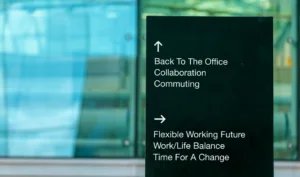
What’s Top of Mind in HR: End of Summer Roundup
Turning the corner to fall, there’s so much HR news to dive into. These four reads caught my attention. They’re all compelling takes on today’s

Turning the corner to fall, there’s so much HR news to dive into. These four reads caught my attention. They’re all compelling takes on today’s

We publish a lot of articles at TalentCulture by terrific HR practitioners, innovators, and thought leaders. In fact, we’ve been sharing useful ideas from diverse

For most of the last three years, millions of people clocked in at work from the comfort of home. Now, eager to return to a

At what point in a career does learning stop? Hopefully, never! Most business and technical professionals realize that becoming proficient in a job and becoming

Running a business from home can be an exhilarating and highly rewarding experience. But remote business owners know that leading from a home office also

The pandemic changed how we live and work in so many ways — not the least of which was the daily commute. But now, after

We don’t need research to tell us the future of work will be much different from pre-pandemic norms. But Covid isn’t the cause. Disruption was

Predicting the unexpected is a tricky process — especially in the world of digital innovation, where change and disruption are a way of life. But

When the pandemic suddenly forced millions of people to work remotely, employers weren’t sure what to do next. Because the transition was nearly instantaneous, this

Have you noticed that workforce engagement and motivation are slipping? You’re not the only one. In April, Gallup confirmed that U.S. workforce engagement declined from

There’s no doubt about it anymore—the workplace has shifted fundamentally. Now, according to Pew Research, almost 60% of employees are working from home at least

Sponsored by: SAP Concur The next chapter of the future of work – hybrid work—is underway as businesses return to the physical office in some